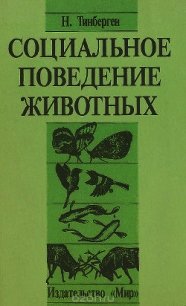Волшебная эволюция - Стестад Ханна Нюборг (читать книги онлайн полностью без регистрации .txt, .fb2) 📗
Список источников составлен не в алфавитном, а в хронологическом порядке, то есть по мере упоминания в книге.
По-настоящему вдохновили меня эти два научных издания, в них много информации и ярких примеров. Из них вы можете подробно узнать о принципах, которые я раскрываю в этой книге. Особенно рекомендую первую из публикаций.
Davies N. В., Krebs J. R., West S. А. (2012). An introduction to behavioural ecology. 4th Edition. John Wiley & Sons.
Breed М., Moore J. (2015). Animal Behavior. 2nd Edition. Academic Press.
Биология, кастовое и общественное устройство муравьев-листорезов:
Hölldobler В., Wilson Е. О. (2010). The leafcutter ants: civilization by instinct. WW Norton & Company.
Одомашнивание грибницы муравьями-листорезами:
Mueller U. G., Rehner S. A., Schultz T. R. (1998). The evolution of agriculture in ants. Science. 281(5385). 2034–2038.
Распределение ролей и переработка отходов у муравьев-листорезов:
Hart A. G., Ratnieks F. L. (2002). Waste management in the leaf-cutting ant. Atta colombica. Behavioral Ecology. 13(2). 224–231.
Симбиоз муравьев-листорезов, грибов-паразитов и бактерий:
Heine D., Holmes N. A., Worsley S. F., Santos A. C. A., Innocent Т. М., Scherlach K., Patrick E. H., Douglas W. Y., Murrell J. C., Vieria P. C., Boomsma J. J. (2018). Chemical warfare between leafcutter ant symbionts and a co-evolved pathogen. Nature communications. 9(1). 2208.
Жабовидная ящерица, которая стреляет кровью:
Sherbrooke W. С., Middendorf III G. А. (2001). Blood-squirting variability in horned lizards (Phrynosoma). Copeia. 2001(4). 1114–1122.
Sherbrooke W. C., Middendorf III G. A. (2004). Responses of kit foxes (Vulpes macrotis) to antipredator blood-squirting and blood of Texas horned lizards (Phrynosoma cornutum). Copeia. 2004(3). 652–658.
Слепая пещерная рыба:
Keene A., Yoshizawa М., McGaugh S. E. (2015). Biology and evolution of the Mexican cavefish. Academic Press.
Moran D., Softley R., Warrant E. J. (2015). The energetic cost of vision and the evolution of eyeless Mexican cavefish. Science advances. 1(8). e1500363.
Возникновение и биология лемуров:
Gould L., Sauther M. L. (eds.) (2006). Lemurs: Ecology and Adaptation. Springer Science & Business Media.
Сравнение прыжков у лемуров:
Crompton R. Н., Sellers W. I. (2007). A consideration of leaping locomotion as a means of predator avoidance in prosimian primates. Primate antipredator strategies. P. 127–145. Springer. Boston. МА.
О Чарльзе Дарвине и его труде «Возникновение видов»:
Browne Е. Janet (2002). Charles Darwin: vol. 2. The Power of Place. Jonathan Cape.
Рекомбинация генов как причина возникновения яда у змеи:
Jorge М. Т., Ribeiro L. А. (2000). Envenoming by the South American pit viper Bothrops neuwiedi Wagler. Annals of Tropical Medicine & Parasitology. 94(7). 731–734.
Мутация березовых пядениц в Англии:
van’t Hof А. Е., Campagne P., Rigden D. J., Yung C. J., Lingley J., Ouail M. A., Hall N., Darby A. C., Saccheri I. J. (2016). The industrial melanism mutation in British peppered moths is a transposable element. Nature. 534(7605). P. 102.
Возвращение белой окраски у березовых пядениц:
Clarke С. A., Mani G. S., Wynne G. (1985). Evolution in reverse: clean air and the peppered moth. Biological Journal of the Linnean Society. 26(2). 189–199.
Березовые пяденицы в 2003 году:
Cook L. М. (2003). The rise and fall of the carbonaria form of the peppered moth. The Quarterly review of biology. 78(4). 399–417.
Миграция бабочек монархов:
Reppert S. М., Gegear R. J. Merlin С. (2010). Navigational mechanisms of migrating monarch butterflies. Trends in neurosciences. 33(9). 399–406.
Техника полета бабочек монархов:
Zhan S., Zhang W., Niitepold K., Hsu J., Haeger J. F., Zalucki M. P., Altizer S., de Roode J. C., Reppert S. М., Kronforst M. R. (2014). The genetics of monarch butterfly migration and warning colouration. Nature. 514(7522). 317–321.
Бабочки монархи в симуляторе:
Mouritsen Н., Frost В. J. (2002). Virtual migration in tethered flying monarch butterflies reveals their orientation mechanisms. Proceedings of the National Academy of Sciences. 99(15). 10162-10166.
Миграция каменок обыкновенных:
Bairlein F., Norris D. R., Nagel R., Bulte М., Voigt С. C., Fox J. W., Hussell D. J., Schmaljohann H. (2012). Crosshemisphere migration of a 25 g songbird. Biology letters. 8(4). 505–507.
Рак-щелкун в Ростоке:
Foer J. Atlas Obscura: Zoological Collection of the University of Rostock. https://www.atlasobscura.com/places/zoological-collection-of-the-university-of-rostock; Kinzelbach R. K. (2005). Das Buch vom Pfeilstorch. Basilisken-Presse.
Индиговый овсянковый кардинал ориентируется по звездному небу:
Emlen S. Т. (1967). Migratory orientation in the indigo bunting. Passerina cyanea. Part I: evidence for use of celestial cues. The Auk. 84(3). 309–342.
Многие животные ориентируются no вариациям магнитного поля Земли:
Wiltschko W., Wiltschko R. (2005). Magnetic orientation and magnetoreception in birds and other animals. Journal of Comparative Physiology A. 191(8). 675–693.
Молодые журавли учатся у более опытных:
Mueller Т., O’Hara R. В., Converse S. J., Urbanek R. P., Fagan W. F. (2013). Social learning of migratory performance. Science. 341(6149). 999–1002.
Способ питания клеста-еловика:
Benkman С. W. (1993). Adaptation to single resources and the evolution of crossbill (Loxia) diversity. Ecological monographs. 63(3). 305–325.
Benkman C. W., Young M. A. (2019). Red Crossbill (Loxia curvirostra), version 2.0. The Birds of North America (P. G. Rodewald). Cornell Lab of Ornithology. Ithaca. NY. USA.
Различные звуковые сигналы у сурикатов:
Manser М. В., Seyfarth R. М., Cheney D. L. (2002). Suricate alarm calls signal predator class and urgency. Trends in cognitive sciences. 6(2). 55–57.
Сытые сурикаты лучше стоят на страже:
Clutton-Brock Т. Н., O’Riain М. J., Brotherton P. N., Gaynor D., Kansky R., Griffin A. S., Manser M. (1999). Selfish sentinels in cooperative mammals. Science. 284(5420). 1640–1644.
Гепарды почти всегда нападают на самую рассеянную газель:
Fitz-Gibbon С. D. (1989). A cost to individuals with reduced vigilance in groups of Thomson’s gazelles hunted by cheetahs. Animal Behaviour. 37(3). 508–510.



